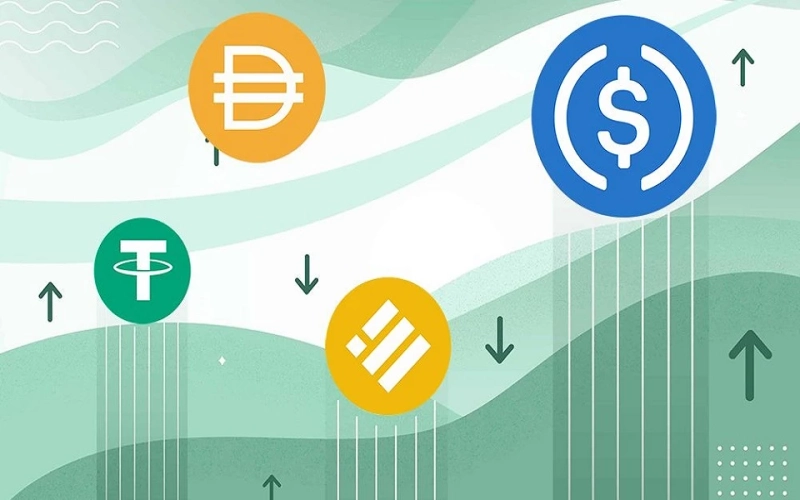Token minting is a crucial step in crypto token development. It defines how digital assets are created, distributed, and managed on a blockchain. Ethereum and Binance Smart Chain (BSC) are the most popular platforms for this process. But which one is better? The answer depends on factors like transaction fees, speed, security, and ecosystem strength.
Understanding Token Minting
Token minting is the process of generating new tokens on a blockchain. It follows predefined rules set by smart contracts. These tokens can be used for payments, governance, DeFi applications, gaming, and more.
Ethereum and BSC both support token minting but have different mechanisms, costs, and advantages. Ethereum follows the ERC token standards like ERC-20, ERC-721, and ERC-1155. BSC has similar standards, including BEP-20 and BEP-721.
Choosing the right blockchain depends on the use case and budget. A token development company needs to evaluate gas fees, scalability, and adoption before selecting the best option.
Ethereum: The Pioneer of Token Minting
Ethereum is the first blockchain to introduce smart contracts and token standards. It powers thousands of tokens and decentralized applications (dApps). Many of the biggest crypto projects started on Ethereum.
Security and Decentralization
Ethereum is known for its security and decentralization. It runs on a large network of nodes, making it resistant to attacks. The recent shift to Ethereum 2.0 and Proof-of-Stake (PoS) has improved its sustainability and reduced energy consumption.
Smart Contracts and Token Standards
Ethereum offers advanced smart contract capabilities. It supports various token standards, making it ideal for creating fungible and non-fungible tokens (NFTs). ERC-20 tokens are widely used in DeFi, while ERC-721 and ERC-1155 are popular in gaming and digital art.
High Gas Fees and Network Congestion
One major drawback of Ethereum is its high gas fees. Transaction costs can be unpredictable, especially during network congestion. This can be a challenge for startups or projects with limited budgets.
Strong Ecosystem and Developer Support
Ethereum has a vast developer community and a rich ecosystem. It is compatible with major wallets, exchanges, and DeFi protocols. This makes it a top choice for token creators who want strong adoption.
Binance Smart Chain: A Cost-Effective Alternative
Binance Smart Chain (BSC) emerged as a faster and cheaper alternative to Ethereum. It offers similar functionalities but with lower transaction fees. This has attracted many projects looking for cost-effective solutions.
Lower Fees and Faster Transactions
BSC provides low-cost transactions, making it attractive for developers and users. Gas fees are significantly lower than Ethereum, which benefits microtransactions and high-volume trading.
BSC is also faster, with a block time of around 3 seconds compared to Ethereum’s 12-14 seconds. This improves transaction confirmation speed, making it ideal for dApps and DeFi platforms.
Centralization Concerns
One key difference between BSC and Ethereum is decentralization. BSC relies on a limited number of validators, making it more centralized. This raises concerns about security and governance. While centralization increases efficiency, it also reduces censorship resistance.
Smart Contract Compatibility and Adoption
BSC is compatible with Ethereum Virtual Machine (EVM), allowing developers to migrate projects easily. It supports BEP-20 and BEP-721 tokens, which function similarly to Ethereum’s ERC standards. Many crypto token development projects choose BSC for its affordability and ease of deployment.
However, BSC’s ecosystem is smaller compared to Ethereum. Some projects prioritize Ethereum due to its network effect and long-term reliability.
Ethereum vs. Binance Smart Chain: A Direct Comparison
Feature Ethereum Binance Smart Chain (BSC) Transaction Speed Slower (12-14 sec/block) Faster (3 sec/block) Gas Fees High and unpredictable Low and stable Decentralization Highly decentralized More centralized Security Stronger, but costly Good, but validator control raises concerns Ecosystem Size Largest in crypto Growing but smaller than Ethereum Smart Contract Support Advanced, supports complex contracts Supports most Ethereum contracts Adoption in DeFi and NFTs Dominant player Increasing adoption
Ethereum remains the leading blockchain for token minting due to its security and strong ecosystem. However, Binance Smart Chain provides a more affordable and faster alternative. The choice depends on project requirements.
Which Blockchain is Better for Token Minting?
Choosing between Ethereum and BSC depends on multiple factors. If security, decentralization, and long-term adoption are priorities, Ethereum is the best choice. It is ideal for high-value tokens, DeFi platforms, and NFT projects.
For projects that require low fees and fast transactions, BSC is a strong contender. It is suitable for gaming tokens, microtransactions, and projects targeting a wider audience.
A token development company should assess these factors before making a decision. Developers must also consider token standards, interoperability, and the target audience.
Final Thoughts
Both Ethereum and Binance Smart Chain have their strengths and weaknesses. Ethereum leads in decentralization, security, and ecosystem growth. BSC offers lower costs and faster transactions, making it attractive for startups.
The best choice depends on the project’s needs and budget. Developers and businesses should evaluate gas fees, transaction speed, and network security before selecting a blockchain. Crypto token development is evolving, and both platforms continue to innovate.
For long-term stability and adoption, Ethereum remains the dominant choice. However, for affordability and efficiency, Binance Smart Chain is a viable alternative. The future of token minting will depend on how these blockchains scale and improve over time.


